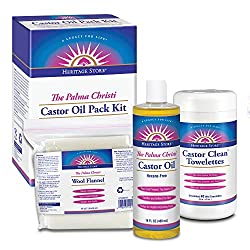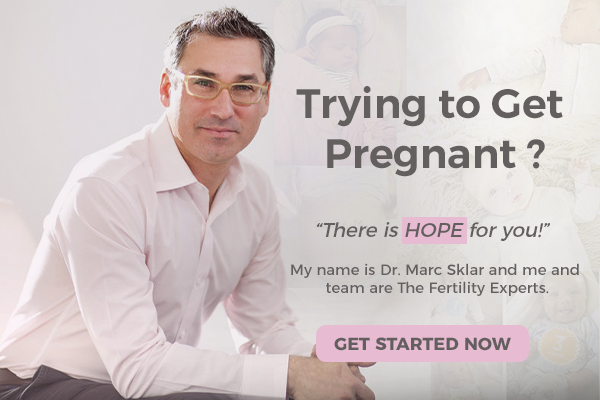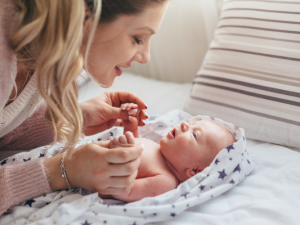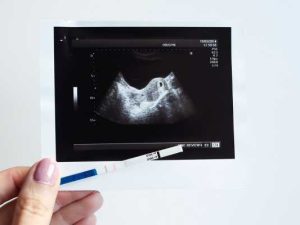Preparing your womb for Implantation
USEFUL RESOURCES FROM THIS FERTILITY TV EPISODE
Order the right test for you.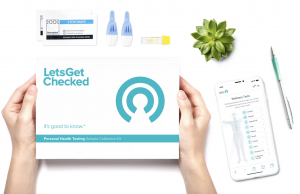
We have a wide range of tests to cover your health needs. Order with next day delivery and avoid sitting in a doctor’s office or clinic.
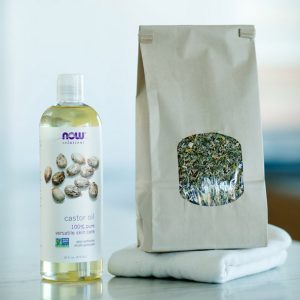 Fertility Vagina Steam Baths
Fertility Vagina Steam Baths
Vaginal steam baths are used to assist in the cleansing of the uterus in conjunction with the Arvigo Techniques of Maya Abdominal Therapy for the treatment of numerous female symptoms.
Transcription:
So today we’re talking about how to prepare your womb or uterus for implantation. So if this topic is important to you, then you’ve got to keep watching.
Hi, I’m Dr. Marc Sklar, the fertility expert, and I work with couples from all over the world, helping you get pregnant naturally. If you want more support on how you can get pregnant naturally, then make sure you subscribe to our YouTube channel, hit that bell so that I can help you too. But before I get started, I’ve got things to mention. If you’re looking for additional support to help you on your fertility journey, and you want to see if me and my team can help you, then I want to encourage you to apply for discovery call to see if we’re the right fit. To do that, just hit the link below in the description to apply.
So as we talk about this topic of preparing your uterus or your womb for implantation, there’s a lot of things that we need to consider as we’re looking at this, or as you’re looking at this and trying to make sure if your uterus is ready and prepared to do one of the most important things that it should do, which is hold a pregnancy and carry a fetus to full term, a full pregnancy, and do the amazing thing of delivering that baby when it’s time.
The first place that we need to start is with an investigation. We’ve got to inquire. We have to ask the right questions and we’ve got to look a little bit deeper to find out if your uterus is ready. So I’ve prepared a list of questions that you need to ask to start looking at this, to start investigating. And I’m going to tell you an answer, a little bit of these questions. So it’s not just the questions themselves, although that’s something that you’re going to have to answer for yourself, but I’m going to give you a little bit of guidance with that in addition.
So we often think of birth control pills as not a big deal, right? So have you been on birth control is an important question. And I know that we’re told that it’s not a big deal. You can take it whenever you need. You can take it for as long as you need, and when you’re ready to come off of it and start a family, you should be ready to have a child. It’s not necessarily the case and taking birth control pills for an extended period of time can definitely affect your hormones and impact your uterus because it doesn’t allow your lining to build up in the same way. And I often hear from women who have been on birth control for an extended period of time, that when they get off, their menstruation is not the same as it used to be before. That their lining doesn’t shed the same way, their bleed is lighter, it’s not as consistent and it doesn’t bleed for as many days. So these are all variables that we need to account for as we’re assessing the health of our endometrium and our uterus, which really go hand in hand.
So that second question is, if so, for how long? Well, it’s not just have you been on birth control pills, but it’s how long have you been on them? So if you’ve been on them for a short period of time here and there, then it might not impact uterine health as much as it would for someone who has been on it for years and years and years. Let’s say someone got on it when they were in their teens and then continued to stay on it throughout until they got pregnant and were ready to have a child. Then that impact is going to be much greater than for one of you who have just been on it for a short period of time.
Now you might be asking the question, well, if I’m doing IVF, my REI often wants to put me on birth control pills. Well, that’s a little bit different. They are using that hopefully for just a short period of time to prepare your uterus, to quiet your ovaries for that coming cycle. So they’re trying to really control everything in that. Often they’ll also use it to get you in line with their schedule and their cycle as well. Those are hopefully for short periods of time. I have had some women who have been put on birth control for months and months in preparation. That’s not my most favorite thing. And if you are able to do IVF and your REI is willing to do IVF more naturally, if you will, without the use of birth control pills, then that is also something to discuss and consider. But the longer you’re on birth control overall, the more impactful, the more of a problem it’s going to cause for your overall hormonal balance and your body.
So this question number three, about what was your menstruation like before you were on the pill is an important one. Now some of you might not remember because it could have been so long ago, right? And you just might not be aware, but I want you to take some time and really ask yourself this question and consider the answer. I would bet that your cycles were different, your bleed was different before you were put on the pill then after, especially if you were on it longterm, that starts to show you that there is an impact in taking birth control pill for an extended period of time and that it can disrupt or change or shift your menstruation in your cycle. So it’s not something to just take lightly. It’s something for us to consider into the bigger picture.
So with this, begs the question of what is an ideal menstrual cycle for any of you watching? Well, what we’d like to see is that your menstruation starts easily with very little fuss and fanfare, so to speak. So very little PMs, if any, no spotting, no bleeding before. Really we want that bleed to start and you to be relatively surprised other than the fact that it’s that time of the cycle to be relatively surprised that your cycle has started. So we just want your bleed to start naturally. It could be lighter in the beginning, but I don’t want it to start with spotting, so to speak, or if it spots in the morning that it turns into a good bleed or a more real bleed later on. And so the first day of bleed is considered day one and not the first day of spotting, but the first day of a full bleed.
So with that, we’d like to see that bleed for at least three days, upwards of five to seven, for some of you that might be different, right? And that we want that color or quality of the bleed to be bright red, a good moderate flow, little to no clots, little to no pain, just easy essentially. And the way we determine how heavy or light it is, is how long it takes you to fill a pad, a cup or a tampon. So it’s normal in the beginning for that to fill within an hour as the cycle extends, that will become longer. If you’re only filling a pad, cup or tampon, maybe once or twice a day, you’re probably not bleeding enough in the beginning, but that would be fine as you taper.
Those are some of the key things that we look for when it comes to menstruation. I’ve done several videos just devoted to this itself. You can find these right here if you need to check those out and learn a little bit more about what a proper menstrual cycle should look like.
And then as we’re comparing things, so what was your cycle before the pill? And then what is your cycle like now? How has that changed? We kind of talked a little bit about that as part of that previous question, but it is something to understand. You might want to make a list before pill, after pill. And so you can see the differences from one side to the other and understand that there is an impact or maybe not, hopefully not, and what that might look like so that you can also have a better understanding for where you are today that will help guide you in terms of how you need to move forward, which we’ll talk about in just a little bit.
The other question that is asked is about cycle regularity. So is your cycle regular? What is considered a regular cycle is a 28 day cycle. It can be a little bit shorter. It can be a little bit longer. The most important thing is that it’s consistent. I have seen and heard from many women that once they get off the pill, their cycle is no longer regular, consistent, it fluctuates. It might come every three months or four months. This is seeing some sort of irregularity induced by the birth control pill. Induced by those hormones that were given to you. And it’s also assuming that you did not have those issues before, that you just have those now.
It’s an important question that doesn’t often get a lot of attention about how regular are you or are you even regular right now? And that definitely is one of the most important questions because that’s the first thing I want to see improve or change in any one cycle as we start to regulate hormones and adjust and improve fertility. I kind of have touched on these questions previously, but I want to isolate them right now.
How many days do you bleed for and what is the quality of your bleed? This is super important. Again, I know I touched on it slightly, but a normal bleed should be somewhere between three to seven days. It should start heavier and then taper off. And the quality is also really important here. It should be a good, nice, bright, red blood. It shouldn’t be brown. It shouldn’t be black. It shouldn’t be dark. It shouldn’t be light. It should be bright red and without clots. It’s okay to have tissue, but hopefully without any clots and it’s okay to taper or spot as you go along in the bleed or the menstruation as well. But that’s basically what we’re looking for in terms of quality of bleed.
So STDs are so important here and they often really get overlooked and ignored, quite frankly. If you had a sexually transmitted disease, this can absolutely impact the health and environment of your uterus and your fallopian tubes. And I spoke to a woman just a couple of days ago, and this was something that we discussed and the reason why we discussed, she said she’s been trying for years off and on with different partners. One of her previous husbands after they split up, he conceived very quickly with somebody else and she’s never had a proper evaluation and she’s young.
So this is the sort of thing that starts to peak my interest and starts to cause me to ask some questions. And the first question I asked her is, have you ever had an STD? And she said, well, yes, I’ve had chlamydia, and I’ve had herpes, but those were both treated and relatively quickly. Now relatively quickly is an important variable here, because if you had an STD, the quicker you treat it, the less likely that it’s going to cause any problems. But the caveat here is, did you know you even had it? And when did you find out in relationship to when you got it so that you can treat it appropriately?
STDs like chlamydia and gonorrhea can cause scar tissue, blockages of the tubes, mostly usually at the connection with the uterus and they can cause all sorts of inflammation and infection in the fallopian tubes and the uterus. This does not create a proper healthy uterine environment for implantation. So this is a key thing to understand. If you have not had any STD testing, which I’d be surprised at this point, but if you haven’t, get it done. If you have had an STD in the past, and you’re not sure if it was treated appropriately, then we need to have an investigation. We need to look deeper into what’s going on in the uterus, if anything. And that’s where some of the other questions will come into play.
So ultrasounds are important here because they’re going to give you a lot of information for a lot of different things. We were just talking about STDs and ultrasound is the first place to start to see if there’s any blockages or obstructions. You might have to go a little bit deeper, but it will be able to start to look and see if there’s any abnormalities, even if they can’t quite tell what they are, an ultrasound of the uterus will at least be able to give us the first level of understanding if there’s any fibroids or cysts or any other things causing potentially an obstruction in the uterus.
Now, an HSG, hysterosalpingogram is also known as the dye test. And this is a test that tells us what’s going on in the fallopian tubes. Are the fallopian tubes open and patent and able to allow the sperm and the egg to meet in the fallopian tubes, which is where that happens? Now, it’s not the most fun procedure, but it is an important thing to rule out, especially if it hasn’t been done. And this is also something that is going be important as we’re kind of ruling out and making sure that the uterine environment is healthy because now we’re going inside the uterus to make sure that everything is functioning properly. The tubes are open. Hopefully, we can also rule out at this point, if there’s any masses like we were talking about before, of fibroids or cysts, and if there’s any scar tissue in relationship to those other STDs or anything like that.
Now we might have to do more advanced scans and screenings besides an ultrasound and an HSG here, but this is the first place to look. And then if there’s any thought or concern about any other issues like inflammation or scar tissue or blockages, then we would start to look a little bit deeper and do some more advanced procedures.
A fibroid is a mass that grows in the uterus. Okay, let me backtrack. A fibroid is a mass that grows in or around the uterus. It is not something that is always found in the uterus. Although that’s probably the bigger concern is that if it’s in the uterus or in the uterine wall and in the endometrium and where in the uterus it is, is also potentially a concern. If it’s on the outside of the uterus, then that’s much less of a concern. And then the size of the fibroid, is it blocking access to the fallopian tubes? Is it getting in the way of an embryo growing and maturing? These are all variable. So we don’t want anything in the uterine cavity that doesn’t need to be there. And fibroids are definitely one of those things that could be seen there.
Now, if you have one, then that has to be considered a little bit differently. We have to be able to be aware of how we take care of it, if it needs to be removed, and in what way. And these are all things that need to … Each case is a little bit different. And we need to understand what your specific situation is, so that we can get proper guidance. Now you might want second or third opinion on that, if you find that, so that you can make the proper decision for yourself, but the first step is the investigation step, which is understanding if the uterine cavity is clear or if there is a fibroid present.
Cyst. Cyst are also masses, but they’re not typically found in the uterus or on the uterus. They’re usually found on the ovaries. So why are we talking about it here? Because it might not impact the health of the uterus or the womb. That piece is correct. But the reason why we’re talking about is often when we find cysts on the ovaries, it could be a sign of endometriosis, because some of those cysts are what’s called endometriomas and that can be an indicator that you have endometriosis and potentially more inflammation. And often that is found on around or in the uterus. So if you find cyst, then we do want to potentially rule out endometriosis. There’s a lot of other signs and symptoms of endometriosis. And I do have videos just devoted to that. If you want to check those out as well, you can check those out right here.
So when we’re talking about the uterine environment and the uterine cavity, one of the more common things to find are what are called polyps. Polyps are like little skin tags that are found inside the uterus. They’re relatively benign, easily removed. But like I said before, if it’s not supposed to be in the uterine cavity, we don’t want it there. So I do recommend having that simple procedure to remove them. Here’s the only caveat. If you’re going through hormone therapy or IVF treatment, then I might wait to have that procedure done until after you’re done with all those hormones and getting ready for transfer because the likelihood of another polyp growing is high with all the medication that you’re being put on. So I might put that off, do all the stimulation that you want to do, retrieve all the eggs you want to do. And then between retrieval and transfer, have those polyps removed.
And this one’s a little bit different. From a Chinese medicine perspective, one of the things that we want to look at is, is your uterus cold or hot? I know that might sound strange, right? So is your uterus cold or hot? That’s going to be an indicator for what’s going on in the uterus. If your uterus always feels cold, we need to increase blood circulation to that area, to warm it up and increase more circulation to the area because increasing circulation helps to create a healthy, proper environment. If your uterus is too hot or too warm, we need to cool it down a little bit.
So these are things that you can easily tell just by taking temperature by feeling. You got to make sure your hands aren’t too hot or cold, and you might want to ask your partner or husband for a second opinion here. But we do want to check the temperature of your low abdomen and uterus to get an understanding for what’s going on. Another indicator for that is if you get cramps during menstruation, are they relieved by putting on heat or are they relieved by putting on a little bit of cool towels? Does that make you feel more comfortable though? So that’s also another indicator of the temperature or environment of the uterus.
And lastly, when we’re talking about investigation, testing, hormone testing. Hormone testing can tell us a lot of information, not just about the quality of your eggs or the health of your ovaries, but also the health of your uterus. So if you haven’t had proper hormone testing done, or you haven’t had it done at the right time of your cycle, then I want to encourage you to make sure you get your standard hormone tests done and get those looked at. I’ve discussed this in a ton of videos, but I can just mention again right here, we want to make sure we’ve got Estradiol done, progesterone, FSH, LH, AMH, testosterone is a big one as well. So these are all some primary hormones that we want to make sure that we get addressed and looked at as we’re doing our investigation piece.
So this piece is a lot. There’s a lot to go over in the investigation piece, but once you do that, that will set you up for everything else that you need to do to make sure that your uterine environment is ready for implantation. So the next phase of this is the plan. We’ve gotten done with the investigation piece. Now we’re talking about the plan. So where do we go from here with all this information? The first thing that I want you to do is start with the foundational things. I know I talk about this all the time, but they’re foundational things for a reason. So once you know what’s going on in your uterine environment and the health of your uterus, then you can make better decisions on some key areas. One is diet, the other is movement and the third is any additional treatments.
So diet is going to be tailored based on what the findings are. If they’re fibroids, if they’re cysts, if there’s endometriosis, if your uterus is hot, if it’s cold, if there’s blockages, if there’s inflammation, if there was an STD or not, these are all things that are going to impact the way you eat. Also, what does your menstrual cycle look like? Is it normal or regular? Is it irregular? What’s the quality of it. These are all variables that once you have that list figured out, it is going to impact the decisions you make when it comes to diet and movement. So diet, obviously some of the basics are staying and eating clean. I have a bunch of videos on this topic, so you can check those out later, but just giving you the understanding that once you know what’s going on, that will impact your plan and how you structure your plan with your diet.
Movement is also one. So we often think that we need to just move more, but what if you have to move less? Again, having an understanding for what’s going on with your cycles, you’re uterine environment and your overall health and fertility is going to impact the decisions you make with regards to movement. Do you move more? Do you move less? What kind of exercise and movement do you do? These are all variables that you also need to consider.
And then additional treatments like, do you incorporate acupuncture? Do you look at taking some supplements or herbs? What other therapies are you going to incorporate now as you’re creating your plan? So step number three, we’ve done investigation. We’ve done thinking about your plan. Now it’s about treatment, which is kind of goes hand in hand with that step number two and plan.
But the first phase of this is going to be detoxification. This is important because if there’s any irregularity or issue with your uterine environment, if you’ve been on birth control pills or hormones for an extended period of time, we want to clean out the body, get rid of any excess hormones. And one thing that we all need to consider is are we also being exposed to chemical toxins, extra hormones and things that we shouldn’t be on a regular basis that we’re either aware or unaware of.
So I want to read you a couple of statistics that I think are going to be really important. There are currently over 84,000 chemicals registered for use in the U.S. and the majority of which have never been tested for safety. Think about that. 84,000 chemicals that are registered and the majority of them have not been tested. So we don’t know what they do to the body. That’s a little bit scary.
Number two. The Center for Disease Control tests for chemicals found in the U.S. population and to date has found more than 300 of them. Some of these chemicals are found in 98% of the population. So they’re testing the population. They’re testing humans for these chemicals. And to date, 98% have been found in the population, more than 300 of them. That’s also a little bit scary and disheartening. So many of these chemicals are linked to health conditions like cancer, diabetes, insulin resistance, weight gain, infertility, thyroid disease, hormone imbalance. These are all part of your endocrine system. So these chemicals are impacting your health, your reproductive system and your endocrine system. That’s important for fertility.
We are exposed to these chemicals by doing normal every day activities like eating, washing your hair, putting on makeup, cleaning, playing outside, et cetera. These are all things that impact our health and that put us at exposure to some of these chemicals and toxins. And some of these things are just not … They’re unavoidable because we have to live our regular life. So this is why we start in our treatment phase of things with step number one being detoxification. Now there’s several ways that I want you all to detoxify.
First and foremost is physically detoxifying, cleaning out the hormones that have build up in the body, supporting the liver detoxification phase, phase one and phase two of the liver and really supporting your body. The easiest way to do that is by avoidance, is avoiding exposure to these chemicals, avoiding exposure to these non-healthy foods. So cleaning up your diet and then supporting your body by getting rid of those extra things with increased abundance of fruits and vegetables to help the detoxification process of your liver and support your liver.
The next piece of detoxification is cleaning out and rejuvenating the uterine environment. We’re talking about the uterus in this video, and that’s very important. So what’s one of my favorite ways to clean out and support the uterus? It’s a vaginal steam. The steam is done after you’re done bleeding and it helps to flush out any remaining tissue that gets built up and wasn’t eliminated. And typically you’ll start to see a shift or a change in the quality of your bleed. And also you’ll have some additional discharge afterwards. So I only like to do this like once or twice when you’re done bleeding and that’s in the early part of the cycle. We don’t do this later on. You can also potentially incorporate a Castor pack on your lower abdomen to help with detoxification as well and helping to support your uterine environment and cleaning that out.
And the third piece, as it relates to detoxification is mentally. How are we going to mentally detoxify? So part of that is going to be meditation, doing some wonderful meditations to help focus our bodies on what it can do and how you can support it. And there are ways that you can meditate and visualize, so part of meditation can be visualization. Visualize your uterine environment, and the uterus becoming healthy and strong. The endometrium growing nice and thick and anything that’s not supposed to be there clearing out. So detoxing, mentally as well to create a nice routine of meditation and visualization is also a big part of the detoxification process.
This part of the treatment phase is called elimination. What does that mean? It’s getting rid of the stuff in your house and in your environment that should not be there? So one of the first things that I recommend when it comes to that is we need to stop bringing all those funky things and toxic things and bacteria and so forth into our house. Well, how do we do that? The easiest way and one of the most important ways to do that is by actually taking off your shoes before you come into the house. So you’re at your door, your front door, all those things either stay outside or right on the inside of that door, but don’t come beyond that.
I’ve developed a habit in my family that everyone takes off their shoes, either in the garage or out the front door. And then we don’t use the shoes in our house as much as we can. That’s ideal. Now the only caveat to that is we tend to have a big pile of shoes by our doors. And so we do have to manage that piece of it, but that is an important variable to minimizing and limiting how much junk comes into the house. Getting rid of those things in the house that might impact your health and environment, and that are toxic as well is really important.
So what chemicals are you using to clean? What chemicals are you using on your face and your body that you can start to swap out and do that slowly. So as one thing runs out, you swap it with something else that’s clean and healthier than what you were doing before. Don’t waste the money. Don’t just like clean house all at one time, but do it slowly and over time.
And then cleaning your home. This is something that we take for granted, but how often are you actually cleaning your house? How often are you dusting? How often are you vacuuming and sweeping? I have to tell you, I can sweep my house every day and find piles of dirt. That’s how much stuff still comes into the house, and we take off our shoes. So if you don’t clean your house regularly, you should, you should make a habit of doing that. But you do need to be careful of the types of cleaning products you use to make sure that they are healthy and safe. There’s tons of healthy and safe options for using cleaning products in the house these days. You don’t need all those chemicals and really toxic products that you might be using already at home.
And then last but not least, as we are talking about part of your plan, one of the best things that you can do to help support uterine environment is uterine massage or abdominal massage. This is very easy. You could just do very simply like a nice circular motion on your low abdomen with a little bit of Castor oil or nothing. You can also do some downward motions from your navel down to your pelvic bone in different motions, but getting this moving helps to remind your uterus that things need to move. Things need to be moving out of the body, and it helps facilitate that process.
It’s really a nice thing to also do as you’re getting ready for menstruation. If you know that you’re towards that part of your cycle, and if you feel comfortable doing, because you haven’t been trying to get pregnant, then you can also do some of that light massage. There are plenty of providers probably in your area. Maybe not plenty, but there should be some around that do uterine massage, fertility massage, or my abdominal massage as well that you can reach out to, to help you incorporate that into your fertility plan.
So my question for you is going to be what of these things is enlightening? Like what did you not know about before this video? And number two, what are you going to incorporate into your pattern as you’re creating a plan and treatment for yourself. One of these therapies that I’ve just talked about, are you going to start to incorporate into your daily plan?
Hey, before you close out this video, don’t forget to like, subscribe and turn on post notifications. Bye.
All right, everyone. Until the next video, I want you to stay safe, stay healthy, and most of all, stay fertile.
H.O.P.E Coaching – Heal naturally to Overcome infertility & get Pregnant by Empowering your body
Who is this for: Any women trying to get pregnant for +6 months
It includes: 60 minutes coaching call with Dr Sklar, The Fertility Expert
During this 1 hour online fertility consultation with Dr Sklar, or his team of natural fertility experts, you will get all the fertility support you need, we will review your case, give you recommendations and create a next steps for a personalized plan to help you get pregnant
The H.O.P.E Coachingis a 60 minutes call where we will go over your fertility case and give you customized recommendations, that work for YOU. Me and my team of fertility doctors are here to help you improve your fertility to get pregnant.

